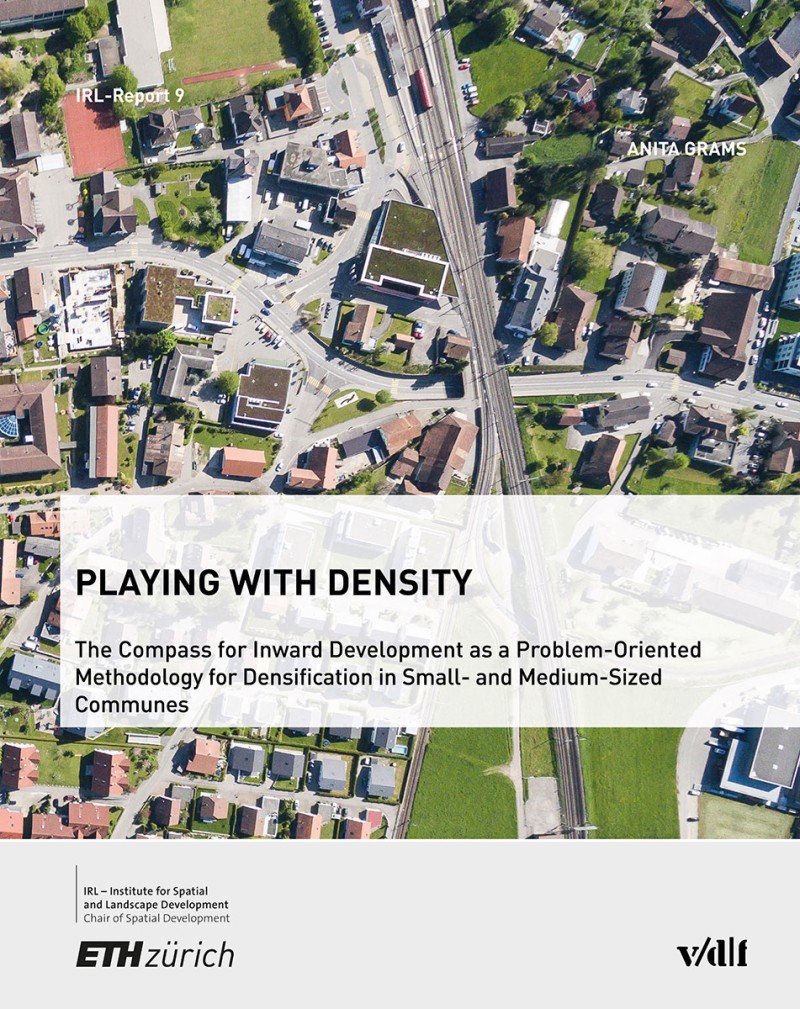Playing with Density
- The Compass for Inward Development as a Problem-Oriented Methodology for Densification in Small- and Medium-Sized Communes
Inward Urban Development, Spatial Development, Spatial Planning, Densification
The revised Swiss Spatial Planning Law, which came into effect in 2014, and the minimum strategy of "inward development before outward development" obligate municipalities to direct their spatial development toward existing, largely built-up spaces, and to coordinate building zone dimensioning across municipal boundaries. For many small- and medium-sized municipalities in Switzerland, this means changing thought patterns with regard to spatial planning practice.A major element of inward development is the constructional densification of existing settlement areas. However, especially in small- and medium-sized municipalities, densification is confronted with numerous problems, such as insufficient acceptance of dense building typologies, mobilisation obstacles for reserves secured under building law, and the lack of thought patterns concerning inward development. This is where the research in this volume sets in, leading to the hypothesis that inward development in the main settlement areas of Switzerland is possible, but that the existing formal instruments of spatial planning themselves are insufficient for this purpose.
An estimation of the reserves in the Swiss Plateau shows that there is a theoretical capacity for accommodating around 0.5–1 million additional inhabitants there is without having to adjust the formal instruments. Around two-thirds of all reserves are located in smalland medium-sized municipalities with fewer than 10,000 inhabitants, which, moreover, make up 93% of all administrative units of the Swiss Plateau. In addition, it is estimated that half of the floor area reserves lie on already built-up, though underused, plots. In the main settlement area of Switzerland, a systematic "density eschewal" is taking place in small- and medium-sized municipalities.
In order to help inward development achieve a breakthrough in the main settlement area in Switzerland, informal procedures are needed in these municipal categories that result in a revision of local planning. In doing so, informal procedures should not negate the specific organisational form of small- and medium-sized municipalities, namely, the militia system of governance, but should rather adapt to this principle. An "inward development compass" brings together the knowledge existing in the militia system of governance, forming the informal prelude to the "local planning revision of the third generation" in small- and medium-sized municipalities.
The inception of the revised spatial planning law and its stipulations on inward development and densification confronts the three large-scale areas of Switzerland with different challenges. Yet driven by changes in the fields of demographics, energy, and finances, the initial problems will manifest themselves most clearly in the Swiss Plateau. If the required transformation process is to succeed, a more pronounced orientation of policy and spatial planning towards the initial problems in small- and medium-sized municipalities is necessary.
We support open access (free download), what about you?
- Buchreihe: IRL-Berichte – Publikationsreihe des Instituts für Raum- und Landschaftsentwicklung IRL, ETH Zürich Band 9
- Auflage: 1., 2019
- Seiten: 224 Seiten
- Abbildungen: zahlreiche Abbildungen, farbig
- Format in cm: 21,0 x 26,5
- Einbandart: PDF
- ISBN: 978-3-7281-3922-1
- DOI: 10.3218/3922-1
- Sprache: Englisch
- Lieferstatus: lieferbar



